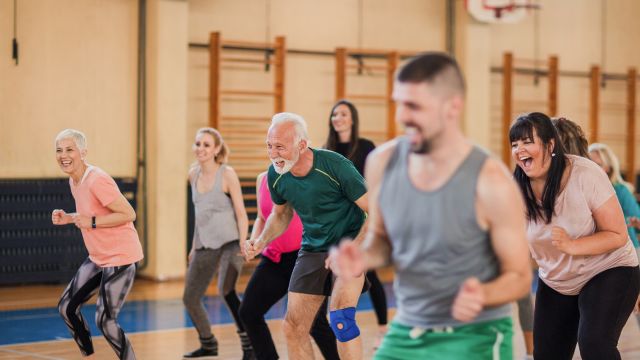Pain and heart trouble are tangled together. “Silent” heart disease may first show up as unexplained aches and pains that people never mention to their doctors. Pain often accompanies you once you have a diagnosis. In a study called published in the September 2009 European Journal of Cardiovascular Nursing, researchers concluded that a majority of heart failure patients experience pain.
They are among the millions of people who use prescription painkillers to manage pain. In the sad news of American deaths from prescription opioids, we tend to focus on overdoses. But in the first few months of treatment, more deaths are caused by heart and respiratory failure, according to a study published in JAMA in June 2016.
Never ignore pain. Treat it in every way you must—which may include exercise.
Exercise is a Pain-Killer
I can’t argue that exercise alone will enable you to manage a serious pain. However, I know that, over time, people who exercise become more tolerant of pain.
A group of Australian scientists put this observation to the test, publishing their findings in August 2014 in Medicine and Science in Sports and Exercise. They gave volunteers standard tests of pain tolerance before and after six weeks of cycling for thirty minutes, at 75 percent of maximal oxygen consumption, three times a week. The volunteers not only became more fit, but their pain tolerance increased dramatically.
Anecdotally, I can say exercise really does toughen you up. I knew an avid swimmer who passed a kidney stone—the closest feeling men get to childbirth!—while swimming and didn’t even notice. He said later he just thought it was a “cramp.”
The trouble is that pain tends to many of us to the couch. But if you have painful arthritis, for example, exercise helps lubricate your joints and reduce the discomfort. Exercise will also help you manage your weight and take some of the burden off your hips and knees.
Forget “No Pain, No Gain”
Please understand me: I am not saying you should exercise through a sharp, stabbing pain (the swimmer I mentioned before should have stopped to check out his cramp). The old idea that a workout had to be painful to be effective is wrong. Any sharp shooting or stabbing pain during exercise means you need to stop and evaluate the cause.
During an intense workout, lactic acid builds up in your muscles and causes a “burn” for a few seconds. Athletes, young and old, love the burn! Exercise hard enough, and you’ll learn to recognize that feeling and distinguish it from problem pain.
After a workout, you can be absolutely exhausted and your muscles may be a bit sore, especially if you did more than usual. But that soreness should last for two days at most; three days of soreness means you overdid it.
Some people push themselves at each workout and use pills to manage sore muscles or swelling in an untreated injury. That kind of ambition leads straight to a fall. Eventually the macho exercisers are so injured they have to stop altogether for weeks or months.
Manage Stress
Pain is also tangled up with mood—it’s hard to be cheery when you’re in pain. But being uplifted (or even just distracted) can make pain more bearable. Ornish Lifestyle Medicine prescribes stress management tools to relax, and find joy and acceptance of challenges. Calm, self-awareness may help you minimize pain.
This content originally appeared on Ornish Living.






